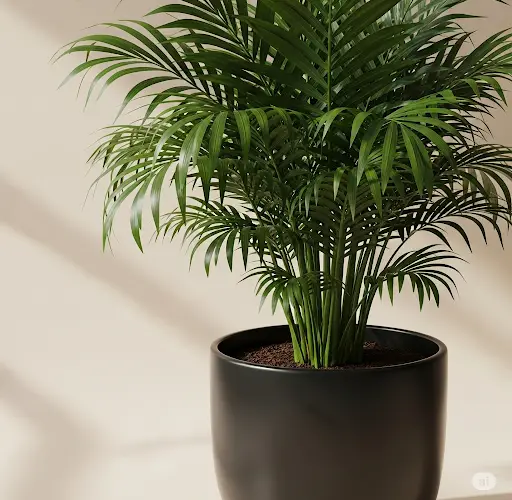Date palms (Phoenix dactylifera) are majestic plants that bring a tropical flair and elegance to any home or garden. Whether you grow a young indoor date palm or a mature outdoor specimen, proper care in spring is essential to keep your palm healthy, lush, and thriving throughout the year.
This article covers the essentials of spring pruning, soil renewal, and feeding your date palm using two versatile fertilizers that support robust growth. By following these guidelines, your date palm will flourish with strong leaves and vibrant new growth.
Why Spring Is the Best Time for Date Palm Care
Spring signals the start of the active growing season for many plants, including date palms. As temperatures warm and daylight increases, palms come out of their winter dormancy or slow-growth phase and begin to produce new fronds and roots.
Spring care allows you to prepare your palm for vigorous growth, prune away any damage from winter, and refresh the soil to provide essential nutrients.
Step 1: Spring Pruning of Date Palm
Unlike some other palms, date palms benefit from regular pruning to remove old, damaged, or yellowing fronds that can drain the plant’s energy. Pruning also improves air circulation around the base and prevents pest or disease problems.
How to prune your date palm in spring:
-
Use clean, sharp pruning shears or a pruning saw for thicker fronds.
-
Remove any brown, dry, or yellow fronds close to the trunk without damaging healthy tissue.
-
Cut fronds carefully, leaving a small “stub” rather than cutting flush to avoid injury.
-
Avoid cutting green fronds unless they are severely damaged, as they provide vital nutrients to the plant.
-
Remove any flower stalks or seed clusters if you want to redirect energy to foliage growth.
Spring pruning helps redirect the palm’s energy to producing strong, healthy new fronds and roots.
Step 2: Refreshing the Soil
Over time, the soil around your date palm can become compacted, depleted of nutrients, or develop a buildup of salts from fertilizers and tap water. Fresh soil allows better root aeration and nutrient uptake.
How to renew the soil for your date palm:
-
Gently remove the top 2–3 inches of old soil from the pot or garden bed around the palm’s base.
-
If potted, consider repotting every 2–3 years with fresh palm-friendly soil mix.
-
Mix organic compost or well-rotted manure into the new soil for added nutrients and improved structure.
-
Avoid heavy clay soils that retain too much water and suffocate roots.
Refreshing the soil improves drainage and encourages healthy root growth.
Step 3: Two Universal Fertilizers for Date Palms
Feeding your date palm with the right nutrients is crucial for vibrant green fronds and strong growth. Here are two versatile fertilizers that work well for date palms and many other houseplants or garden plants.
1. Balanced NPK Fertilizer (10-10-10 or 20-20-20)
A balanced fertilizer with equal parts nitrogen (N), phosphorus (P), and potassium (K) supports overall plant health:
-
Nitrogen promotes lush green leaf growth.
-
Phosphorus supports strong root development and flowering.
-
Potassium improves disease resistance and overall vigor.
Apply this fertilizer every 6–8 weeks during the growing season, following the package instructions for dosage. For potted plants, dilute to half strength to avoid fertilizer burn.
2. Organic Seaweed Extract or Liquid Humic Acid
These organic supplements improve nutrient uptake, stimulate root growth, and increase stress resistance:
-
Seaweed extracts are rich in trace minerals, vitamins, and natural growth hormones.
-
Humic acid enhances soil microbial activity and improves soil structure.
Use these products as a foliar spray or soil drench every 4 weeks during spring and summer for best results.
Additional Tips for Date Palm Spring Care
-
Watering: As growth accelerates in spring, increase watering frequency but allow the soil surface to dry slightly between waterings. Avoid waterlogging.
-
Sunlight: Ensure your date palm receives bright, indirect sunlight. Outdoors, they thrive in full sun or partial shade.
-
Pests and Diseases: Regularly inspect your palm for signs of pests like spider mites or scale insects. Treat infestations early with insecticidal soap or neem oil.
-
Mulching: Apply organic mulch around the base to conserve moisture, regulate temperature, and suppress weeds.
Why Consistent Spring Care Matters
Date palms are slow growers, but with consistent care during spring, you lay the foundation for healthy development all year long. Pruning removes obstacles to new growth, fresh soil revitalizes roots, and the right fertilizers provide essential nourishment.
By dedicating a little time and effort to your date palm each spring, you’ll be rewarded with striking, healthy fronds that enhance your home’s atmosphere or garden’s beauty.
Conclusion
Spring is the perfect season to rejuvenate your date palm with proper pruning, soil renewal, and feeding. Remove damaged fronds, refresh the growing medium, and apply balanced and organic fertilizers to promote lush growth.
Following these steps ensures your date palm remains strong, green, and visually stunning through every season.



